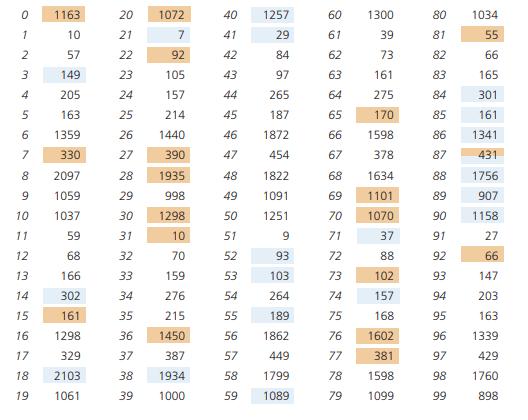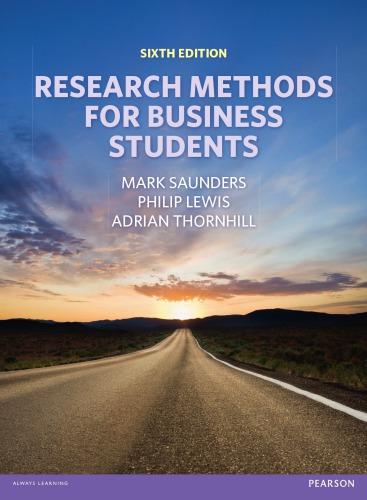7.3 a Your answer will depend on the random numbers you selected. However, the process you follow...
Question:
7.3 a Your answer will depend on the random numbers you selected. However, the process you follow to select the samples is likely to be similar to that outlined. Starting at randomly selected points, two sets of 20 two-digit random numbers are read from the random number tables ( Appendix 3 ). If a number is selected twice it is disregarded. Two possible sets are: Sample 1: 38 41 14 59 53 03 52 86 21 88 55 87 85 90 74 18 89 40 84 71 Sample 2: 28 00 06 70 81 76 36 65 30 27 92 73 20 87 58 15 69 22 77 31 These are then marked on the sampling frame (sample 1 is shaded in blue, sample 2 is shaded in brown) as shown below:

b Your samples will probably produce patterns that cluster around certain numbers in the sampling frame, although the amount of clustering may differ, as illustrated by samples 1 and 2 above. c The average (mean) annual output in tens of thousands of pounds will depend entirely upon your sample. For the two samples selected the averages are: Sample 1 (shaded in blue): £6,752,000 Sample 2 (shaded in brown): £7,853,500 d There is no bias in either of the samples, as both have been selected at random. However, the average annual output calculated from sample 1 represents the total population more closely than that calculated from sample 2, although this has occurred entirely at random.
Step by Step Answer:

Research Methods For Business Students
ISBN: 9780273750758
6th Edition
Authors: Mark Saunders, Philip Lewis, Adrian Thornhill






